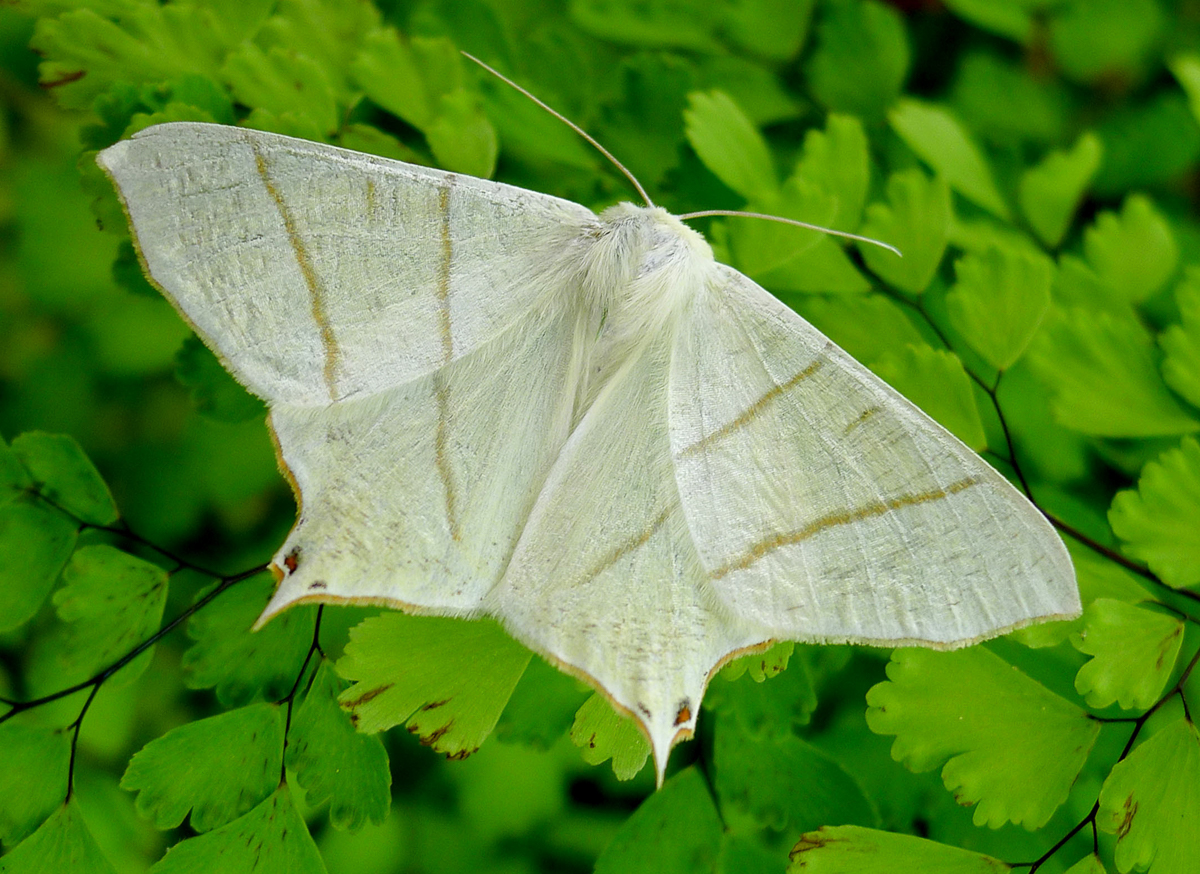
Photo © Gail Hampshire
The swallow-tailed moth (Ourapteryx sambucaria) is a moth of the family Geometridae. The species was first described by Carl Linnaeus in his 1758 10th edition of Systema Naturae. It is a common species across Europe and the Near East.
This is a large (wingspan 50–62 mm), impressive moth, remarkably butterfly-like. All parts of the adult are bright white to pale yellow marked with faint buffish fascia. The species gets its common name from pointed projections on the termen of the hindwing with brownish spots at their base. It flies at night in June and July and is attracted to light, sometimes in large numbers. Prout gives an account of the variations. The egg is orange, with about 16 longitudinal keels and between them transverse lineations. The larva is grey-brown, the colouring arranged in a succession of scarcely noticeable longitudinal lines.
The brown, twig-like larva feeds on a variety of trees and shrubs including elder, hawthorn, honeysuckle and ivy. The species overwinters as a larva.
Source: Wikipedia
The primary larval foodplants are Beech (Fagus sylvatica), Black Currant (Ribes nigrum), Blackthorn (Prunus spinosa), Bramble (Rubus fruticosus), Canadian Goldenrod (Solidago canadensis), Common Ivy (Hedera helix), Elder (Sambucus nigra), Firethorn (Pyracantha coccinea), forget-me-nots (Myosotis spp.), Garden Privet (Ligustrum ovalifolium), Goat Willow (Salix caprea), Hawthorn (Crataegus monogyna), Holly (Ilex aquifolium), Honeysuckle (Lonicera periclymenum), Horse-chestnut (Aesculus hippocastanum), Lilac (Syringa vulgaris), oaks (Quercus spp.), Pear (Pyrus communis), Sycamore (Acer pseudoplatanus) and Wych Elm (Ulmus glabra).